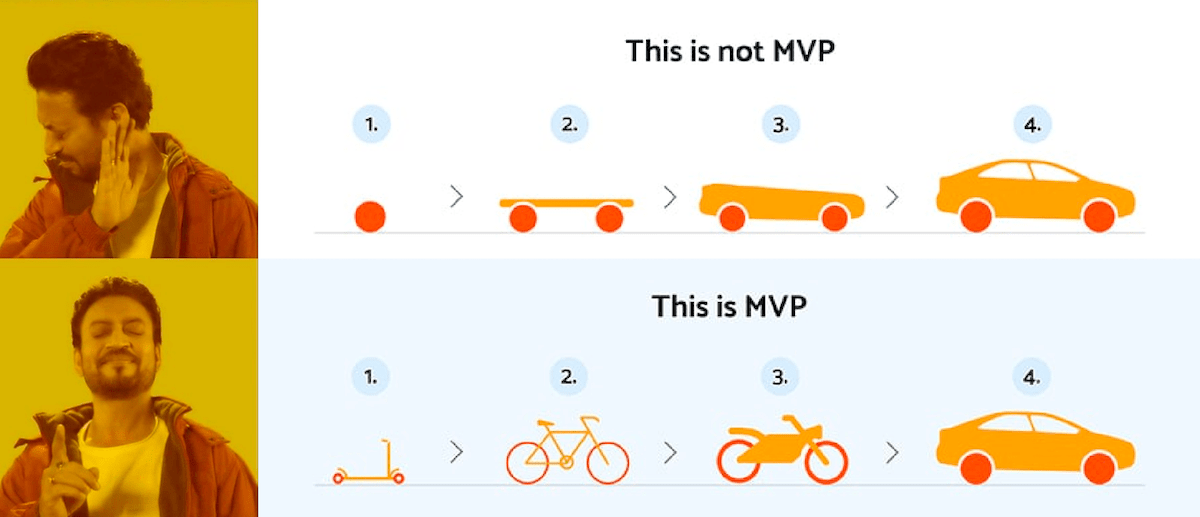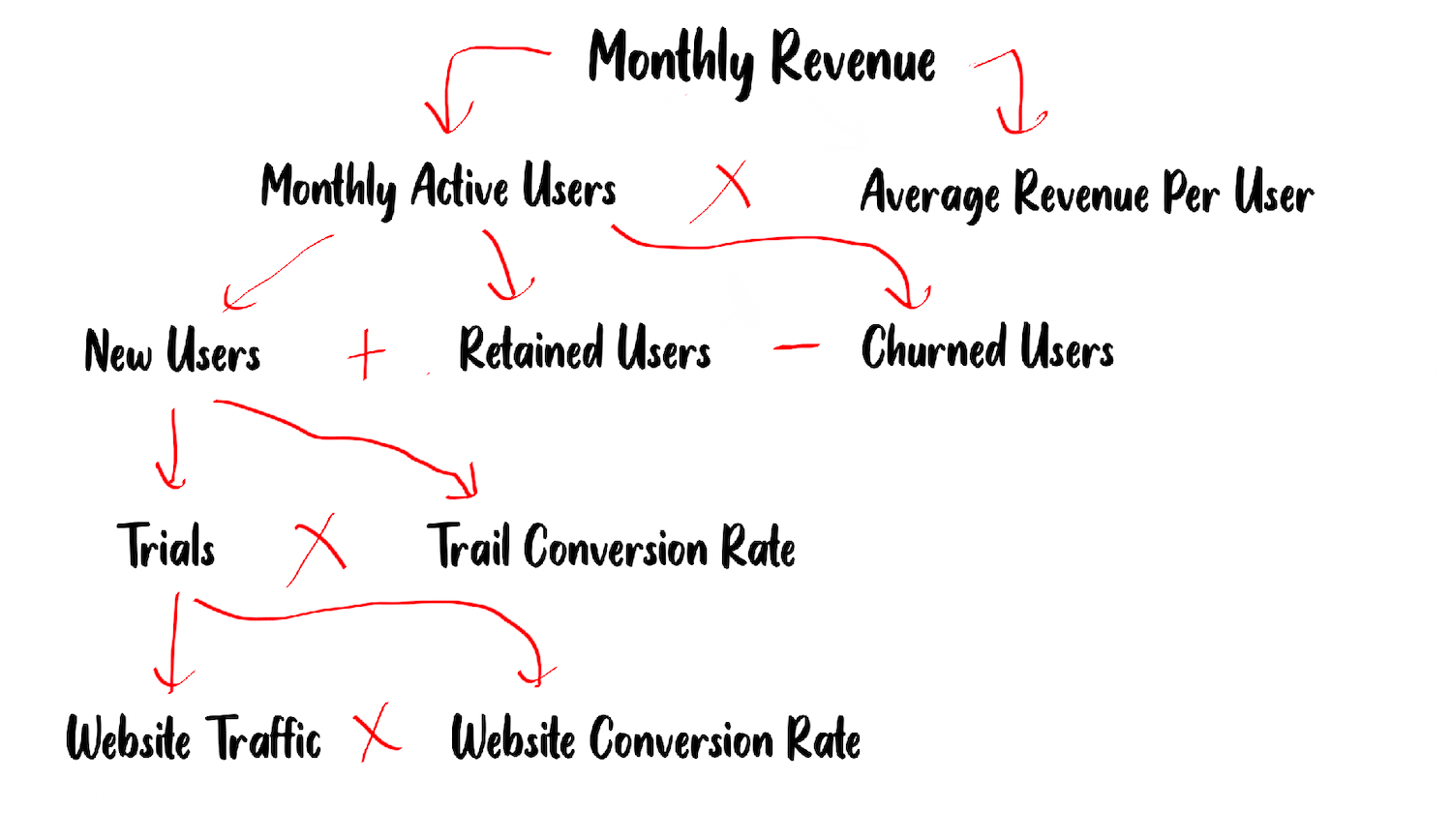“As to methods, there may be a million and then some, but principles are few. The man who grasps principles can successfully select his own methods. The man who tries methods, ignoring principles, is sure to have trouble.”
— Harrington Emerson
First principle thinking is a way of problem-solving where you break the situation down into its fundamental parts and then reconstruct them to arrive at a solution.
In this post, we will learn how you as a product manager can utilize “first principles thinking” to navigate common issues and create successful products.
To understand “first principles thinking” better, let’s take the most popular example from the real-life Tony Stark 🦾 !
Elon Musk wanted to create rockets so that he can send humans to MARS someday.
So, he went to different rocket-building agencies to find out the cost of building rockets.
To his surprise, rockets were a pretty huge deal, and he got quotes of up to 65 million dollars for a single rocket.
He used his first principles mindset to break down a rocket into its constituent parts: Aerospace-grade aluminum alloys, titanium, copper, and carbon fiber.
He went on to commodity markets in search of these constituents and was able to find that the required quantity could be bought at around 2% of the typical price.
Thus, instead of spending multi-millions into buying rockets from others, Musk went on to build his own rocket company – SpaceX.
Thinking from first principles can be a game-changer for anyone.
It opens new pathways and possibilities.
It helps you think critically about the situation at hand, and come up with noble solutions.
The real power of first principles is unlocked when you start combining fundamental components of two different systems together to create an entirely new value proposition.
How to apply the first principles in our lives?
You can make first principles a part of your life by tackling situations in the following ways:
- Break systems down into their constituent parts. A system could be a situation, a problem, or even a machine.
- Combine the constituent parts of different systems to create something entirely unique and valuable.
- Question the reliability of analogies and lazy deductions.
Now that we have a background of first principles ready, let us understand how it can help you become a better product manager.
In almost all the well-written job descriptions for product managers, you will find the requirement of a ‘first principles thinker’. In the rest of this post, we will understand why.
Thinking from analogy v/s first principles.
Great product managers solve the most important problems by first principles thinking and avoid relying only on analogies. When given a problem, most of us tend to solve it by driving an analogy. An analogy can help you get incremental improvements or even worse: copy-cats. It can almost never get you out-of-box solutions.
A great product manager would always understand the constituents of their problem as well as the solution. If you give a product tear-down exercise to a newbie PM they would jump into improving upon the UI/UX or user flow as the first instinct. While the seasoned product manager will always consider the user, the problem that is being solved, and the product strategy, before jumping into tear-downs. Such a product manager can create customer experiences from scratch, while other people will always look for analogies to do something.
Pick the right problem
First-principles thinking forces you to get to the depth of the problem. You keep on double-clicking the problem until you get to its fundamentals. Product managers can achieve this by asking ‘why’ enough times. The ‘Five why’ which is a popular method for ‘root cause analysis is derived from the same similar concept of breaking the system down into its components.
So next time you see a dip in any metric, or you are asked to build a feature, do not forget to ask ‘why’ 5 times to arrive at the real issues. Only after breaking your problem down, you should start thinking about the solutions.
Popular problem space frameworks such as “Jobs to be done”, “Fish Bone Diagrams” are also based on a similar concept of identifying the root reasons behind our actions.
If you start applying first principles to your problem identification sessions you’ll naturally find yourself applying these frameworks (JTBD, 5 Whys, Fish Bone) even without throwing jargon at your team.
Form v/s Function – Building MVPs
Since we are more accustomed to thinking through analogies, we put more focus on the form of the solution rather than the function.
For example, people who criticize technical progress often ask, ‘Where are the flying cars?’. As every sci-fi movie from the 70s to 90s claimed that technology would make flying cars possible.
The answer is, we already have flying cars, they are known as planes. It’s just that we have a tendency to focus so much on the form (car) that we overlooked the actual function (traveling through the air).
Product managers who apply first principles understand things from a deeper and functional perspective. Thus while designing MVPs great product managers always give preference to the function and not the form.
The situation is illustrated below.

Learned something useful? Show us some love on twitter → Tweet Now ←
Prioritization and Saying ‘No’
As a product manager, you should be good at breaking down your business goals into constituent metrics.
The break-up below shows how the monthly revenue of a SAAS/Subscription business can be broken down into various metrics:

As a product manager, you’ll be flooded with product ideas from across the company and your users. The actual impact that the idea could bring, can be easily understood by breaking down your whole product experience into its fundamental components. Now if the new idea actually contributes something to the fundamental components then you can go ahead with research and implementation, else you can share your structure of the thoughts with the stakeholders and that will make it obvious for them to drop the idea.
As per the break-up above, if your website conversion rates are poor, then probably you should prioritize working on conversion optimization before working on increasing the traffic.
Killing bad ideas is one of the most difficult yet important responsibilities of a product manager. By using first principles you will get better at identifying such ideas and now you have a framework to explain the underlying thought process as well.
Modularity & Reusability
First-principles force you to think about any system in terms of its constituent modules.
Your product, customer experience, and goals, all can also be seen as a collection of modules. If you understand these modules well then you can easily make decisions to find alternatives, replace some, or even use them in a different combination to create an entirely new experience.
Amazon web service is such an example: most of the services offered by AWS (hosting, database, file storage, DNS, etc) were used by Amazon’s eCommerce website. Jeff Bezos ordered to decouple all services, convert each into an independent module and enabled these systems to talk to each other through APIs. Amazon took these services and wrapped them together as AWS. AWS modules now power more than 33% of the cloud world today.
As a product manager, you should develop a solid understanding of the components of your product experience, this will help you make a lot of critical decisions. Always inspire modularity among your design, operations, and tech teams, this will help as you scale, create new offerings, debug things faster, or optimize existing ones.
Finding the right metrics.
One of the prime responsibilities of a product manager is to identify and improve the right metrics for the product.
With so much data available and so many vanity metrics thrown all around, it becomes even more critical to set your eyes on the right targets. Copy-pasting metrics that are common in the market such as CAC, LTV, Retention etc., isn’t going to crack it because every product is different.
To find the right metrics, the product manager has to start with asking the right questions. Use first principles to break down your top priority business metrics (revenue, market share etc.) into the right fundamental questions and make them a compass for your decision making.
At INDmoney, we always used to work towards one goal – How can this feature/change put more money in the hands of our users?
Most of our features, metrics, and experiments were driven by this fundamental question. This question became our goal only after deconstructing user behavior and motivation through first principles. Having more money is a very tangible outcome that people are looking for.
All features of the app are driven by the same fundamental principle.
Now you can build on top of these fundamentals and relate them to user experiences/analytics of your product.
“Most people use analytics the way a drunk uses a lamppost, for support rather than illumination.” – David Ogilvy
People often use analytics as an after-thought to justify their decisions. First-principles force you to ask the right questions and then chase the right outcomes.
Now you might be asking yourself that “if first principles are the answer to every problem then why do we don’t see more and more people applying these principles?”
The answer is, it’s difficult and non-intuitive for our brain to think through first principles.
It takes more cognitive power to think about something so critically while your brain is always tuned to look for shortcuts and less work. That is also the reason why most of us think in terms of analogies because it’s easier. However, with repeated practice, you can tune your brain to think from a first-principles perspective.
Ending Notes:
By now you might have understood that first principles thinking is just about breaking systems, situations, or problems into smaller chunks and using these chunks to create solutions. While we have limited ourselves to its use cases in product management, I am sure it can help you in other aspects of your life as well.
As a takeaway just remember the three ways in which you can implement first principles thinking in everything you do:
- Break systems down into their constituent parts. A system could be a situation, a problem, or even a machine.
- Combine the constituent parts of different systems to create something entirely unique and valuable.
- Question the reliability of analogies and lazy deductions.
Liked the content? Don’t forget to share this in your network and help other product managers and creators! → Tweet Now ←
Want to learn modern product management?
Applications for our next Cohort are open, apply here ⇒ https://hellopm.co
 WATCH HELLOPM COHORT IN ACTION
WATCH HELLOPM COHORT IN ACTION



0 thoughts on “First principles for Product Managers”
Comments are closed.